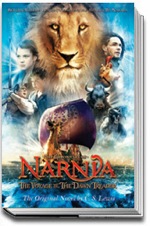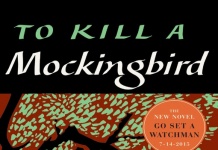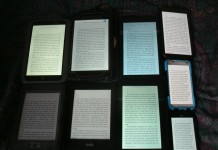 From the press release:
From the press release:
Experience Narnia as never before with a ground-breaking mixed-media digital edition from HarperCollins Publishers: THE VOYAGE OF THE DAWN TREADER Enhanced eBook ($9.99). This rich-media version targets multiple senses to create an innovative and exciting way to experience Narnia on e-reading technology.
For the first time readers can experience the entire original text amplified with full-color images, integrated audio, embedded video and interactive trivia, all of which can be activated with the touch of a fingertip. Readers can download this leading-edge iteration of the classic story for their tablet devices ahead of Twentieth Century Fox’s film adaptation “The Chronicles of Narnia: The Voyage of the Dawn Treader” (released December 10th).
THE VOYAGE OF THE DAWN TREADER Enhanced eBook will be available on a number of handheld multimedia readers and touchscreen devices. Interactive features include:
· Embedded Video: An Animated Journey of the Voyage of the Dawn Treader—an exclusive video offering readers a journey along the animated time line of the ship and crew’s voyage, with original Pauline Baynes artwork, music, and narration· Integrated read-along audio excerpts: abridged text read by Derek Jacobi
· Interactive trivia: flip the cards to test your Narnian knowledge
· Full-color images: just double tap to enlarge


































This will also strike a blow against children learning to use their own imaginations to decide what a tale’s various characters look and sound like. Leave that to our experts, HarperCollins seems to be saying, and leave it to us to create those “rich media versions” for you to buy. Not accidentally, when these children’s imaginations have been sufficiently crippled, they’ll provide a ready market for Twentieth Century Fox’s even less imagination-stimulating films.
I say this not because I’m against all illustrated children’s texts or movies for kids. I say it because our childhood imaginations play an important role in developing a healthy conscience and an honest worldview. Far too many people today have who/what they like/dislike (trust/fear) driven by the images and words of others on screens. As a result, they lack what G. K. Chesterton called a “moral imagination.”
That moral imagination begins in childhood when hopefully we are first given the opportunity think for ourselves. It’s taken away when we’re fed a diet of Disney films, to give one unfortunate example. Those films show us good and bad characters who look in quite predictable ways. Someone who looks as pretty as Snow White may, in reality, be cruel and self-centered. Someone who looks like Cruella de Vil may be kind and giving. But that’s not something Disney will ever teach us.
That difference matters. Books without rich media allow us to bring our experience of that into our reading. We shape our views about good and evil on the actual world around us. Rich media is really impoverished media. Its pictures, sounds and even “ebedded video” do not enrich our children lives. They crush their imaginations under the dictates and prejudgments of others.
“I’m against all illustrated children’s texts or movies for kids”
That is an unjustified extremist viewpoint and I believe it is misguided and not supported by any argument or evidence. All children should be exposed to a mixture of all kinds of stimulation, video, text, audio and mixtures of all three. Imagination has many forms and many paths to fulfilment.
@Howard: Fantastic quoting out of context there. The sentence you quoted begins with “I say this not because”. The unjustified extremist viewpoint you are condemning has been espoused by NOBODY.
…. I must have been either really really sleepy or on something stronger than water Ross….. My apologies… and to Michael … 🙁